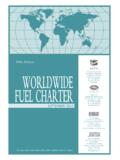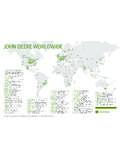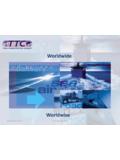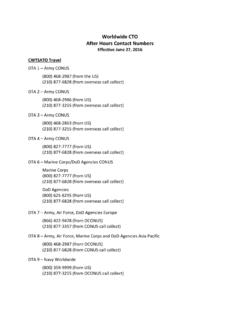Transcription of 349–360 No. 35 Weekly epidemiological record …
1 Measles vaccines: WHO position paperIn accordance with its mandate to provide guidance to Member States on health policy matters, WHO issues a series of regularly up-dated position papers on vaccines and com-binations of vaccines against diseases that have an international impact on public health. These papers, which are concerned primarily with the use of vaccines in large-scale immu-nization programmes, summarize essential background information on diseases and vac-cines, and conclude with the current WHO position concerning their use in the global context. The papers have been reviewed by a number of experts within and outside WHO, and since 2006 have been reviewed and en-dorsed by WHO s Strategic Advisory Group of Experts on immunization.
2 The position pa-pers are designed for use mainly by national public health officials and managers of im-munization programmes. However, they may also be of interest to international funding agencies, the vaccine manufacturing industry, the medical community, scientific media and the revised WHO position paper on measles vaccines replaces the corresponding paper published in the Weekly epidemiological record in March 2004. Footnotes provide a limited number of core references; their abstracts as well as a more comprehensive list of references may be found at This position paper also provides links to 3 grading tables that assess the quality of the scientific evidence for a few key conclusions. BackgroundMeasles epidemiologyMeasles virus is highly infectious and, in the prevaccination period, >90% of individuals were infected by the age of 10 years, the ma-jority with symptoms.
3 Measles occurs only in humans; measles virus is transmitted by aero-solized respiratory droplets and by direct con-tact. The incubation period is 10 14 days (range, 8 15 days) from exposure to onset of rash, and patients are contagious from about 4 days before eruption of the rash until 4 days after eruption. In tropical zones, most cases of measles occur during the dry season, whereas in temperate zones, incidence peaks during late winter and early spring. In 2001, Vaccins contre la rougeole: note d information de l OMSC onform ment son mandat, qui est de fournir des conseils aux tats Membres sur les questions relati-ves aux politiques de sant , l OMS publie une s rie de notes d information r guli rement actualis es sur les vaccins et les associations vaccinales contre les maladies qui ont un impact sur la sant publique au niveau international.
4 Ces notes d information, qui portent essentiellement sur l utilisation des vaccins dans le cadre de programmes de vaccination grande chelle, r sument les consid rations g n ra-les essentielles sur les maladies et vaccins respectifs et pr sentent en conclusion la position actuelle de l OMS concernant leur utilisation dans le cadre mondial. Ces notes ont t soumises un certain nombre de sp cialistes, l OMS et l ext rieur et, depuis avril 2006, sont examin s et approuv es par le Groupe strat gique consultatif d experts de la vaccination de l OMS. Elles sont principalement destin es aux responsables nationaux de la sant publique et aux administrateurs des programmes de vaccination. Mais elles peuvent galement pr senter un int r t pour les organismes internationaux de financement, les fabricants de vaccins, le milieu m dical, les medias scientifiques et le grand pr sente note d information sur les vaccins contre la rougeole actualise et remplace la note correspondante publi e pr c demment dans le Relev pid miologique hebdomadaire de mars 2004.
5 Les notes de bas de page fournissent un certain nombre de r f rences de base; le lecteur trouvera une liste plus compl te de r f rences, ainsi que des r sum s dans La note d information donne galement des liens avec 3 tableaux d valuation du degr de solidit des preuves scientifiques pour quelques conclusions essentielles. Informations g n rales pid miologie de la rougeoleLe virus de la rougeole est tr s contagieux et, avant l re de la vaccination, >90% des individus avaient t infect s avant l ge de 10 ans. Dans la majorit des cas, il s agissait d infections symptomatiques. La rougeole ne survient que chez l homme; le virus se transmet par les gouttelettes respiratoires en suspen-sion dans l air et par contact direct.
6 La p riode d in-cubation est de 10 14 jours ( tendue: 8-15 jours) entre l exposition et l apparition de l exanth me et les patients sont contagieux environ 4 jours avant 4 jours apr s l ruption. Dans les r gions tropicales, la plupart des cas surviennent pendant la saison s che alors qu en climat temp r , on observe les pics d in-cidence la fin de l hiver et au d but du printemps. Weekly epidemiological recordRelev pid miologique hebdomadaire28 august 2009, 84th year / 28 ao t 2009, 84e ann eNo. 35, 2009, 84, 349 360 , 84, 349 360No. 35 WOrld HealtH OrgaNIzatIONgenevaOrgaNISatION MONdIale de la SaNt gen veannual subscription / abonnement annuelsw. fr. / Fr. s. 334. Issn 0049-8114 Printed in switzerlandContents349 Measles vaccines: WHO position paper Sommaire349 Vaccins contre la rougeole: note d information de l OMS 349350 Weekly epidemiological record , no.
7 35, 28 august 2009an estimated global total of >23 million disability-adjusted life years were lost as a result of can be prevented readily by vaccination. In 2007, worldwide coverage of the first dose of measles vaccine reached 82%; between 2000 and 2007, the estimated number of deaths from measles dropped from 750 000 to 197 However, measles remains an important cause of death and disability in countries with limited health infrastructure. In countries where vaccination has substantially reduced the incidence of measles, failure to maintain high coverage of childhood immunization in all districts has resulted in a resurgence of the disease. The pathogen and the disease Measles virus (genus Morbillivirus, family Paramyxoviridae) is an enveloped, single-stranded RNA virus that has globally retained its monotypic antigenic structure for decades.
8 The genome encodes 8 proteins, including the haemagglutinin (H) and the fusion (F) proteins. The lifelong immunity that follows infection is attributed to neutralizing antibodies against the H Sequencing of the measles virus ge-nome has so far identified 23 different genotypes that can be used to track the end of the incubation period, patients develop prodromal symptoms of high fever, cough, coryza and con-junctivitis. The typical maculopapular rash appears after another 3 4 days, often accompanied by a fever that peaks at 39 40 C. At the onset of rash, bluish-white Koplik s spots, which are pathognomonic of measles, are seen in the oral mucosa. Patients normally improve by the third day after rash onset and are fully recovered 7 10 days after onset of disease.
9 The severity of measles varies widely, depending on a num-ber of host and environmental factors. The risk of develop-ing severe or fatal measles increases for those aged <5 years, living in overcrowded conditions, who are malnourished (es-pecially with vitamin A deficiency), and those with immu-nological disorders, such as advanced HIV infection. In de-veloping countries, case-fatality rates among young children may reach 5 10%.5 In industrialized countries, deaths from measles are rare, although severe forms of the disease and even death may occur in previously healthy individuals. Relatively common complications of measles include otitis media, laryngo-tracheobronchitis and pneumonia. In chil-dren, otitis media occurs in 5 15% of cases and pneumonia in 5 10%.
10 In developing countries, persistent diarrhoea with protein-losing enteropathy may ensue, particularly in infants. Post-infectious measles encephalitis occurs in about 1/1000 cases, and subacute sclerosing panencephalitis, a slowly pro-gressing infection of the central nervous system, occurs in about 1/10 000 100 000 Brenzel L et al. Disease control priorities in developing countries. In: Cairns KL et al, eds. Vaccine-preventable diseases. Washington, DC, The International Bank for Re-construction and Development/The World Bank, 2006:389 411. (Also available from ).2 See No. 49, 2008, pp. 441 448. 3 de Swart RL, Yuksel S, Osterhaus AD. Relative contributions of measles virus hemag-glutinin- and fusion protein-specific serum antibodies to virus neutralization. Jour-nal of Virology, 2005, 79:11547 Rota PA, Featherstone DA, Bellini WJ.
















